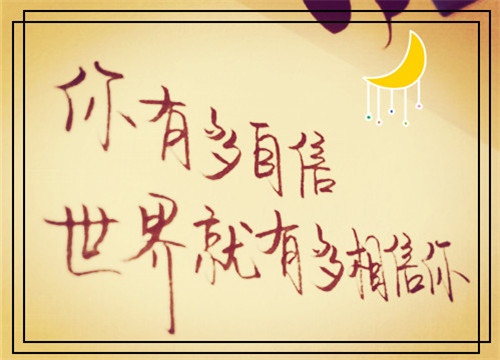
高中英语音标教学课件
教学理念:
1、教学音标的目的不仅是认识48个音标,更重要的是培养学生运用音标的拼读来学习英语的能力,最后形成正确的语音、语调。拼读是一个熟能生巧的过程,只有反复多拼,才能达到熟练。
2、字母、音标、单词、句子“四结合”。音标教学不是孤立的,它可以结合与其相应的字母、单词或句子教学,由点到面,循序渐进,并且元音和辅音结合,培养学生简单拼读音标的英语能力以及训练学生正确的语音、语调、情感,让音标教学的目的更加突出。
3、音标教学的过程中,教给学生正确的发音方法。悦耳动听在元音,口齿清晰在辅音。
4、学生好动,就让学生在活动中学,学生好胜,就让学生在竞赛中练,加上简易的绕口令,既满足了学生的娱乐愿望,又顺利地完成了学习任务。教学中,我尽量设计游戏、竞赛,让学生高兴地练。如通过“字母、音标对比游戏”、“摘苹果”、“竞赛读句子”等学习活动,这样的设计是符合小学生的认知水平以及年龄特点的。
一、教学目标。
1、 学习2个元音音素[ i: ]和 [i],和3个辅音音素[p]、[b]、[m],掌握正确的
发音方法。
2、 训练学生通过2个元音和3个辅音组合进行简单拼读音标的.能力,以及正确练读包含[i:]、[i]、[p]、[b]、[m]的词、短语、句子。
3、 正确书写Bb、Ii、、Mm、Pp这4个字母和 [i:]、[i]、[p]、[b]、[m]这5个音标。
4、 培养学生学习英语的兴趣、热情,以及与同伴之间的合作意识。
二、课前准备。
教师:录音机、相关磁带、图片词卡、细线一条、一张白纸、26个字母
卡片、以及[i:]、[i]、[p]、[b]、[m]的音标卡片以及相关卡片。
学生:“p、b、m、I”4个字母的卡片、以及[i:]、[i]、[p]、[b]、[m]的音标卡片。
三、教学过程。
1、复习热身。
A、师生日常交谈后,唱歌曲《ABC》
(复习26个英语字母的读音)
B、看谁反应快。教师任意出示26个英语字母卡片,学生读出字母的读音。
(为下面的音标教学做铺垫,学习音标后,形成对比,认识到字母与字母音素读音不同)。
2、新课呈示。
引入:(T: We have five new friends, today.)
A、教授[i:]的发音。
1)教师示范[i:]----穿针引线音,边示范边用拇指和食指捏住线从左向右拉。同时,解说发音要领:[i:]发音时,舌尖抵下齿,前舌中部最高,嘴唇向两旁伸开,成扁平形。元音字母e及字母组合ee、ea、ie、ei可以读作[i:]。
2)学生模仿,比一比,谁的发音最佳,并给予恰当的评价。
B、教授[i]的发音。
1)教师示范[i]----微笑露酒窝音,边示范边将手掌张开放到头上向自己的方向挥动。同时,解说发音要领:[i]发音时,舌尖抵下齿,前舌后部最高,舌前部向硬颚抬起比[i:]低些,下颚稍下垂,舌前部也稍下降。
2)边做动作边模仿。
(学习音标如同一年级小朋友学习汉语拼音一样,有一个音与形的认识过程。课堂上,要
3)找一找。请学生们从26个英语字母中,找出哪些字母的发音包含[i:]。
(Bb、Cc、Dd、Ee、Gg、Pp、Tt、Vv)
解说[i:]是一个长元音,“:”是长音符号,比相应的短元音要长两倍以上。[i:]不是[i]的单纯加长。
C、教授[p]的发音。
1) 发[p]音。教师出示一张白纸,放在嘴前,示范发音,纸会颤动。要求学生注意:发[p]时,双唇紧闭,气流从口腔冲出,送气有力。[p]不响亮,单发[p]时,在远处几乎听不见。
2) 开火车比赛发音。(p---p---[p] [p] [p])
(运用“p---p---[p] [p] [p]”这样有节奏的练习发音,充满趣味性,学生学得会非常有兴趣)
3)简单拼读:[p]-[i:]==[pi:],教师示范后,学生模仿发音。要领:辅音轻,元音重。两音相连猛一碰。
(由[p]、[i:]的字母音标发音到[pi:]的简单拼读,是一个由易到难的循序渐进的一个过程,学生不会有困难感,对学生英语学习的兴趣起到正面的推动作用。)
D、教授[b]的发音。
1)教师示范发音。要领:发音方法和[p]相同,但[b]在词尾发得很轻,不如[p]送气有力。
2)个人读-------同桌互读。
3)出示图片词卡(ball)、bag、bed。教读:[b]---[b]===bag、[b]---[b]===bag、[b]---[b]===bed
(将音标与单词相结合,由点到面到训练,让学生练读[p]在单词中的读音,给学生灌输简单的拼读规律)
E、教授[m]的发音。
1)教师示范发音。要领:发音位置和[p]、[b]相同,发音比较响亮,应注意发[m]时双唇始终是紧闭的。
2)个人读--------男生女生读。
3)请你说出包含[m]的单词,给小组赢得小星。
(mum、mother、meet、miss、monkey、mouse、mouth、mike、)
(通过给小组加分的形式说出包含[m]的单词,学生不仅复习了已有的单词,而且让学生练习在不同的单词里[m]的发音,那么对[m]的感知更加深刻。)
3、音标巩固练习。
1)学生简单拼读。
出示小黑板:[pi:] [bi:] [mi:] [pi] [bi] [mi] [pi:p] [bi:p] [pi:m] [pib]
2)字母、音标对比游戏。
教师出示一些卡片,其中有小写字母p、b、m、I的卡片,有[p]、[b]、[m]、[i:]、[i]的音标卡片,以及一写其他字母或音标的卡片。教师说:show me the small letter p/b/m/I 。或说:show me [p]、[b]、[m]、[i:]、[i]。让学生出示相应的卡片。
(通过字母、音标对比游戏,能培养学生自觉地把单词、音标作音、形比较,直至掌握一些规律,学生逐渐明白“[ i]”表示音标,那么单词中有“i”这个字母,不代表它就发[i]的音,逐步学会见形知音的本领,这样的训练,也能为今后学生单词拼读、速记单词能力的培养作好铺垫。)
3)摘苹果。
教师在黑板上出示一张挂满苹果的树挂图,每个苹果上写有一个单词,
如milk、meet、see、key、thin、big、pig、three、he、she等。再画两个篮子,分别贴上[i:]、 [i]的音标,每小组派几名同学上前面来,把树上的苹果摘下来,将含有相同元音的单词放入相应的篮子里 ,最快最准确的小组赢得小星。
(对[i:]和[i]这两个长音和短音的学习做进一步的推进,让字母音标学习与单词相结合。将所有的单词选入正确的篮子里后,再让学生通过单词的朗读,训练学生发音的准确、到位。)
4)、朗读句子。(长条卡片出示)
1)I see a bee in the sea.
2)A big pig in the big ship.
(在教师示范并总结 [i:]、[i]的发音后,进行小组竞读比赛,看哪一组能正确朗读上面的句子,做到既正确又压韵,既流利又有感情 ,这样一来学习活动既锻炼了学生读对[p]、[b]、[i:]、[i]4个音标的使用技能,又体现学生探究与集体主义精神。)
4、拓展训练
绕口令。(小黑板出示)
He sees a ship .
She sees a sheep .
A ship and a sheep .
This is a ship .
That is a sheep.
(编顺口溜不仅可以使知识变得简单,生动、而且印象深刻,而且通过这样的训练,真正将音标教学与语音教学落到实处。)
5、字母、音标书写。
1)、要求学生正确书写“Bb、Ii、、Mm、Pp”这4个英语字母。
2)、正确书写“[i:]、[i]、[p]、[b]、[m]”这5个音标。
四、小作业。
课后和同学比比绕口令。
In the reading process, I will focus on students’ long-term development and enable them to use proper reading skills and strategies. In other words, students are guided to read efficiently and independently.
My teaching plan will include 3 sections. They’re analysis of the reading material, identifying the teaching aims and teaching procedures.
Section 1 Analysis of the teaching material
The selected teaching material is a magazine article taken from the Project section of Module 11, Unit 2 of Advance with English. The article is about British students who take a gap year, which is intended to develop the theme of the unit, that is, Getting a job. After analyzing it carefully, I find the article has two unique characteristics. First, it’s a long passage with 688 words, much more than the usual texts. Second, it deals with a new topic, that is, a gap year. The topic is unfamiliar to most students.
Section 2 Indentifying the teaching aims
Based on the analysis of the teaching material, I have chosen the following as the teaching aims of my lesson:
The 1st aim: Students learn the skills and strategies to read a prolonged text.
The 2nd aim: Students get a better understanding of what a gap year is.
The 3rd aim: Students are encouraged to figure out the implied meaning.
The 4th aim: Students are familiar with various expression_r_r_r_r_rs or approaches to express the same thing or idea.
Section 3 Teaching procedures
In order to achieve the teaching aims mentioned above, I decide to choose guided reading and Task-Based Teaching as the main teaching approach. With the teaching methods, I can guide students to use effective reading strategies to comprehend the text, solve problems and complete different tasks. The teaching procedures include four parts. They’re getting ready, focusing on main facts, reading between the lines and responding the text.
Part 1. Getting ready
Reading begins before a book is opened. It’s important to activate students’ existing background knowledge and draw their attention to the topic of the text. In this part, I will use the pre-reading activities to increase students’ concentration, arouse their curiosities, fire their imagination and give them a purpose for reading. The part consists of two tasks:
Task 1: A time machine. I start my lesson by asking senior 3 students what the date is. Then, I go on to show a picture of a time machine. I tell students that the machine with a magic power will bring them to their graduation from high school, which is 1 year away. At that point, I get them to imagine where they are and what they are doing.
After it, I give a summary of their presentations as follows: After leaving high school, most of Chinese students go straight to university.Yes, at this time next year, most of you will be studying in a university.
(With the task, I inspire students’ former knowledge and imagination about graduating from high school and going to college, which can draw their attention to the theme of the reading material and get them ready for the following reading.)
Task 2: Brainstorming. After the summary, I go on to show some more pictures of British students fresh from high schools, and tell students that more and more students in the UK are doing something different instead of going straight to university. After that, I play the tape of Para.1 and get students to catch the answer to the question: They will travel or work on projects for up to a year before entering university.
(With the task, I excite students’ desire to know more about what their British equivalents will do before going to college. With the question in mind, students will definitely be eager to listen to the tape to find the answer. )
Part 2. Focusing on main facts
During the part, I will ask the students to answer the question—What does the author say? Students are supposed to get a main idea of the text and understand the basic meaning of the text. Questions of this kind are not very difficult and they can be answered directly from the text. The part includes six tasks:
Task 1: Three examples. I move on to tell students as follows: Last year, Carol Smith, Daniel and Martin Johnson, 3 students from the UK, went to some remote places and did something special. After the instructions, I play the tape of Paragraphs 4-6 and get students to complete the following table.
Task 2: Matching. After listening, I get students to open books and scan the three paragraphs to check the answers to the previous table. Then they’re required to complete another table with a second reading. (With the task, I get students to listen to the three paragraphs instead of reading them, thus reducing the amount of reading time and reliving their psychological burden, otherwise students would be discouraged by such a long article.)
(With the task, students learn to use a table to gather the main facts about the three British students. They’ll come to know that a table is of great help in their future reading.)
Task 3: Scanning for a detail. I get students to scan the rest paragraphs and find the answer to the question: What do people call the year off between finishing school and starting university? In doing so, I introduce the theme of the article and write on the blackboard the title: Mind the gap year.
(With the task, students are expected to grasp the theme of the article. The task serves as a bridge,which connects the main facts in Paragraphs 4-6 to the opinions about the gap year in the rest paragraphs.)
Task 4: Definition of the gap year. Students watch a VCR with a question in mind: What three types of activities do the UK students choose to do during a gap year? The key is: Many students use that time to travel, learn new skills or become a charity volunteer.
(The task serves as a supplementary to the second task of Part 1. With the task, students are expected to know more about the gap year.)
Task 5: History of the gap year. I play a second VCR and get students to answer the question: When did the gap year start in the UK?
(The task enables students to have a good knowledge of the history of the gap year.)
高中英语说课稿范文1
I Teaching Aims:
1. To develop Ss’ basic skills of listening, speaking, reading and writing. Reading is the focus in this lesson. Reading skills for Ss include (predicting, skimming, scanning and digesting.)
2. To encourage Ss to practice, participate, and co-operate in the classroom activities.
3. To get Ss to know something about … and have a better understanding of the importance of …. As for teaching approaches, I think … II Teaching Approaches Communicative approach and Computer-Assisted Instruction are to be used in the course of this lesson. And I will try my best to limit TTT, that is, limit Teacher Talking Time and increase STT (Student Talking Time).
So during this lesson, emphases are to be laid on:
1. Student-centered teaching
2. Task-based learning
3. Activity-based teaching (individual work; pair work; group work; class work)
III Teaching Aids:
1. a projector
2. a multi-media computer system
They are for showing Ss some pictures, some audio files, some visual files, some topics or reading tasks.
IV Teaching Procedure
Step 1 Warming-up & lead-in Activity 1 Free talks (class work) Q1: Who do you think looks coolest in our class? Q2: Do you like him/her? Q3: If so, why? If not, why? … Download some pictures/music from the Internet. Guiding Qs may be: Q1: Who’s she/he? Q2: Do you like him/her? Q3: If so, why? If not, why? Q4: Do you think he/she is perfect? Goal: To lead up to the topic, get Ss to warm up and arouse their interest in the topic. Activity 2 Picture-talking /Music-talking (individual work) Step 2 Pre-reading Activity1 Look and guess (class work) In this activity, Ss are required to look at the title/subtitle and guess what they will read.
the picture/… Activity2 Brain-storming (class work)
Goal: To develop Ss’ reading skill---predicting and present some new words in the passage such as …
Activity 1 Skimming (class work) Step 3 Reading
Para of the article (or the first sentence or the last sentence of each Para.) Goal: To develop Ss’ reading skill --- skimming, that is, how can we get the general idea of a passage as quickly as possible. Activity 2 Scanning (group work)
Part/Para.
Main idea
Detailed information
1 a. topic sentences/introduction
b. examples/supporting ideas
c. conclusion
Goal: To develop Ss’ reading skill---scanning, that is, how to find out the clue of a story and motivate Ss to cooperate with each other. Activity 3 Report (class work) Invite some group members to report their work to the whole class. Goal: To overcome Ss’ shyness and stimulate Ss to speak in public. Activity 4 Further understanding and word study (pair work) Encourage Ss to discuss the following Qs in pairs (A PowerPoint will be used here to present some blank-filling exercises and Q1: What does the word ―this‖ in the last Para? But 3 refer to? A. B. C. A. B. D. D. Q2: What is the Chinese equivalent for the phrase ―investing in loss‖? C. Q3: The word ―flawless‖ in Line 5 of Para.2 can be replaced by ___ Q4: Which of the following statements is true or not true? Goal: To help Ss to guess the meaning of certain unknown words and understand the passage exactly. multiple choices.)
Step 4 Post-reading
Activity1 Role-play (pair work) Suppose one student is a … and the other …. Ss are encouraged to put themselves in the situation and make a face-to-face interview. Activity2 Discussion (Group work) Topics may be: Q1: Do u want to be perfect? Q2: Do u think there is anyone in the world that is perfect? ―Remind you‖, remind yourself of what? Activity3 Poster-designing/Cartoon-designing/… (Group work) Goal: These post-reading activities are intended to develop Ss’ creative thinking and get them to know the importance of … Task 1 Write a summary of the passage (about 100 words) (Individual work) Goal: To spur Ss to consolidate what they have learned. Task 2 Look up some more information about … (Individual work) Encourage Ss to go to the school library or get on the Internet if possible to consult related English websites on the topic. Goal: To encourage Ss to study English spontaneously and independently after class, arouse Ss’ interest in traditional Chinese culture and develop Ss’ culture awareness and cross-culture communicative skills. As for my blackboard-design, since time is limited, I’d like to give a brief introduction. Step 5 Homework
高中英语说课稿范文2
Good afternoon, everyone, It’s my great pleasure to be here sharing my lesson withyou.The content of my lesson is Senior English for China Book1B Unit 16 Scientists at work. I’ll be ready to begin this lesson from five parts. Analysis of the teaching material, the teaching methods, the studying methods, the
teaching procedure,and Blackboard design.First, let me talk about the teaching material.
Part 1 Teaching Material:
This unit is about science and scientists. By studying of this unit, we’ll Enable the students to know the serious attitude towards science and develop the interest in science. At the same time ,Let the students learn how to give instructions. this lesson plays an important part in the English teaching in this unit.This is an important lesson in Book One. From this lesson, it starts asking the Ss to grasp contents of each passage. Therefore, this lesson is in the important position of the teaching material. If the Ss can learn it well, it will be helpful to make the Ss learn the rest of this unit.As we all know ,reading belongs to the input during the process of the language learning. The input has great effect on output , such as speaking and writing . According to the new standard curriculum and the syllabus (新课程标准和教学
大纲), after studying the teaching material and analyzing the rule of children’s growing of mind,I think the teaching aims are the followings:
1.Knowledge objects:
a)The Ss can hear, read, and use the main sentence patterns b)The Ss can understand the content of the lesson.
c)The Ss can use the patterns to express their thoughts in the proper situation.
2.Ability objects:
(1) To develop the Ss’ abilities of listening, speaking, reading and writing.
(2) To train the Ss’ ability of working in pairs.
(3) To Improve the student’s reading ability, especially their skimming and scanning ability.
3.Emotion or moral objects:
a)By completing the task,the Ss increase their interest and set up self-confidence in science;
b)Teach the Ss what is “science”, put the moral education in the language study.
now,let’s come to the Important points and the Difficult points.
Well, how to achieve the teaching objects better, how to stress
the important points and break through the difficult points? As is known to us all,The modern teaching demands the teacher should improve the students’ ability. A good teaching method requires that the teacher should have the leading effects. According to the analysis of the teaching material and the students’learning background ,I will use the following methods .
Part 2 Teaching Methods:
In my opinion,the main instructional aims of learning English in the Middle School is to develop the students’ abilities of listening, speaking, reading, writing and their good sense of the English language. So in this lesson I’ll mainly use “Communicative” Approach(交际教学法), “Whole language
teaching” (整体语言教学法)and “Task-based” language teaching (任务教学法). That is to say, I’ll let the Ss to get a better understanding of the key structure of the dialogue. According to the modern social communication teaching theories(现代社会交际教学理论), I adopt the TSA method(情景教学) and TBLT method (语言任务教学)in my teaching, namely Total Situational Action and Task-based Language Teaching.The former is a “scene —
activity” teaching method .It establishes a real scene and the interaction between the teacher and the Ss . The latter offers the Ss an opportunity to complete the tasks in which Ss use
language to achieve a specific outcome. The activity reflects real life and learners focus on meaning, they are free to use any language they want.At the same time, I’ll make use of the modern electricity teaching equipments and all kinds of teaching means, it can develop the Ss creativity in learning English.



